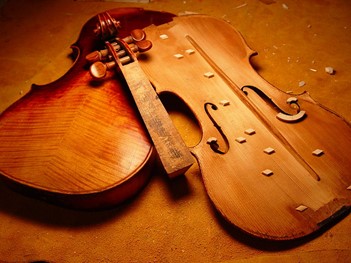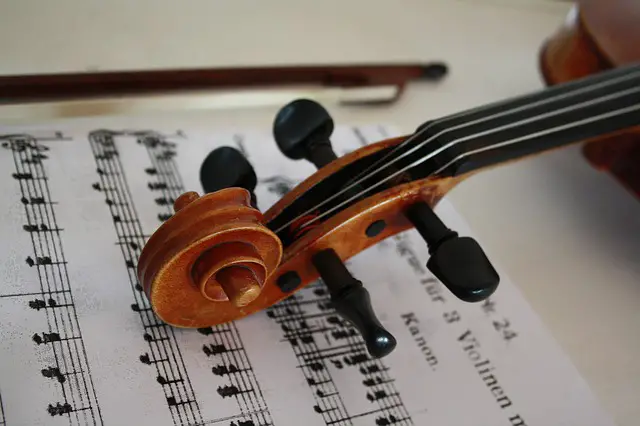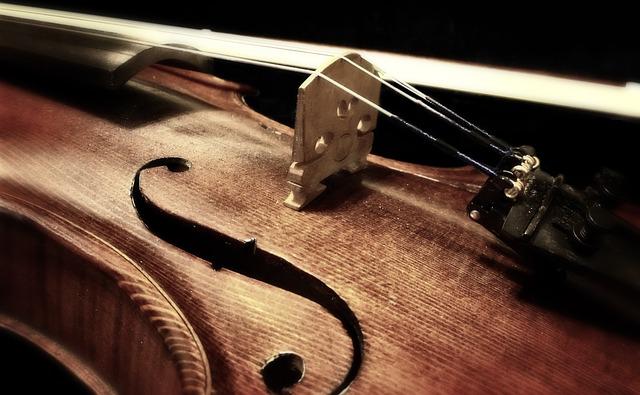
VIOLIN REPAIR – Frequently Asked Questions
Violin repair is without a doubt one of the most difficult jobs on the planet. The instrument must be properly maintained at all times, but if a repair is required, you should always seek the assistance of a trained violin repair specialist. We’ll go over some of the most common issues that can lead to your instrument needing repairs, as it’s important to be aware of minor issues so that they don’t become major ones.
Contents
It appears that my top is becoming unglued. What could be the problem?
The most common issue is a seam that has opened up. Most adequately glued tops are glued with a weaker form of glue than the back, so the top is more likely to come loose. There are three main reasons why a top begins to unravel. The first is excessive dryness, followed by excessive moisture, and finally, poor repair work.
The good news is that your local violin repair shop can easily fix this. They usually dislodge the top from the ribs and re-glue it in a new position.
I have a problem with a soundpost falling down. Any advice?
Since you can severely damage the F-holes if you don’t use proper tools or don’t use the tools properly, this must be reset by someone with proper training. Sound post-production tools can also eat into the instrument’s value. If a soundpost falls down, it must not only be re-erected but it must also be re-positioned properly to ensure the instrument’s best sound.
How do I know when to change the bridge of my violin?
This leads us to the bridge, which is one of the most commonly replaced violin parts. There are a variety of reasons why a bridge may need to be replaced. If the violin is badly warped, for example. If the bridge is ill-fitting, too low, or made of inferior wood. Or if the violin was simply completed with poor workmanship. The type of bridge required to replace your old one is determined by the instrument’s quality. It’s worth noting that while buying a cheaper bridge may save you money in the short term, you’ll pay for it in the long run with lower sound quality. They also tend to wear out more quickly.
I have a crack on my violin, how do I fix it?
Our next issue is cracking, which can be quite serious. You should always be on the lookout for cracking before it turns into a major one, as this will save you a lot of money and help you get a better resale value if you ever decide to sell it.
If the wood shrinks too much and does not pop off the ribs, it can result in unsightly cracks. If your instrument has cracks, never attempt to repair them yourself. Crack repairs are frequently complicated and necessitate extensive training. If your violin is starting to crack, don’t polish it until the cracks have been repaired, or you risk rubbing dirt into the crack from the cleaning and polishing cloth, making the repair more difficult.
Maintaining a violin humidifier in your case can also help to reduce the risk of cracking.
Is it possible to change the fingerboard by myself?
The violin’s fingerboard is the next topic. The fingerboard will wear out over time and develop grooves and bumps as a result of repeated playing. After a fingerboard has been over-planed (the part that overhangs the body), it will thin out and begin to drop, causing a hump near the neck and body joint. With the exception of a thinned-out fingerboard, almost all fingerboard issues can be resolved by planing, scraping, and sanding; however, only a trained specialist should do so.
My pegs have become worn out. What should I do?
The violin pegs are yet another issue that could become a major problem if no action is taken. The most used part of a violin is the pegs. You grab the pegs and begin tuning each time you play, and after a long period of constant tuning, the pegs begin to wear out. One of the most serious problems is that when pegs wear out, the peg holes deteriorate as well. A peg shaper and a reamer are frequently used to reshape the pegs and redo the holes. The pegs may become very short as a result of this process, but they will still work much better after refitting. The pegs will need to be replaced if this process cannot be completed.
What can I do to keep my violin in good shape?
While all of the aforementioned repairs will require the assistance of a violin repair specialist, there are a few things you can do to keep your violin in the best possible condition.
It is crucial to keep your instrument clean at all times. To avoid excess rosin and dirt developing, wipe the rosin off the violin after each performance and use a violin polish or cleaner at least once a month. Never use chemicals or rubbing compounds to remove rosin; this is something only a professional should do.
Furthermore, even the best bridges can warp if not properly maintained, so keep yours straight at all times. Simply grasp the top of the bridge and pull back until it is perpendicular to the top if it actually starts to tilt forward due to the pull of the strings during tuning.
Any additional tips that I should focus on?
Remember to keep an eye out for any seam openings or cracks, as they are always easier to fix when they are small. Always use a humidifier if necessary!
Finally, if you have any doubts about something on your violin, take it to a violin repair shop. It’s always preferable to be safe rather than sorry!
- Viola vs Violin – 5 Key Differences Between The Two Instruments - March 20, 2024
- 15 of the Most Famous Violinists of All Time (18th Century to Present) - March 20, 2024
- Full School Band Instruments List (Elementary / Middle / High) - March 18, 2024


